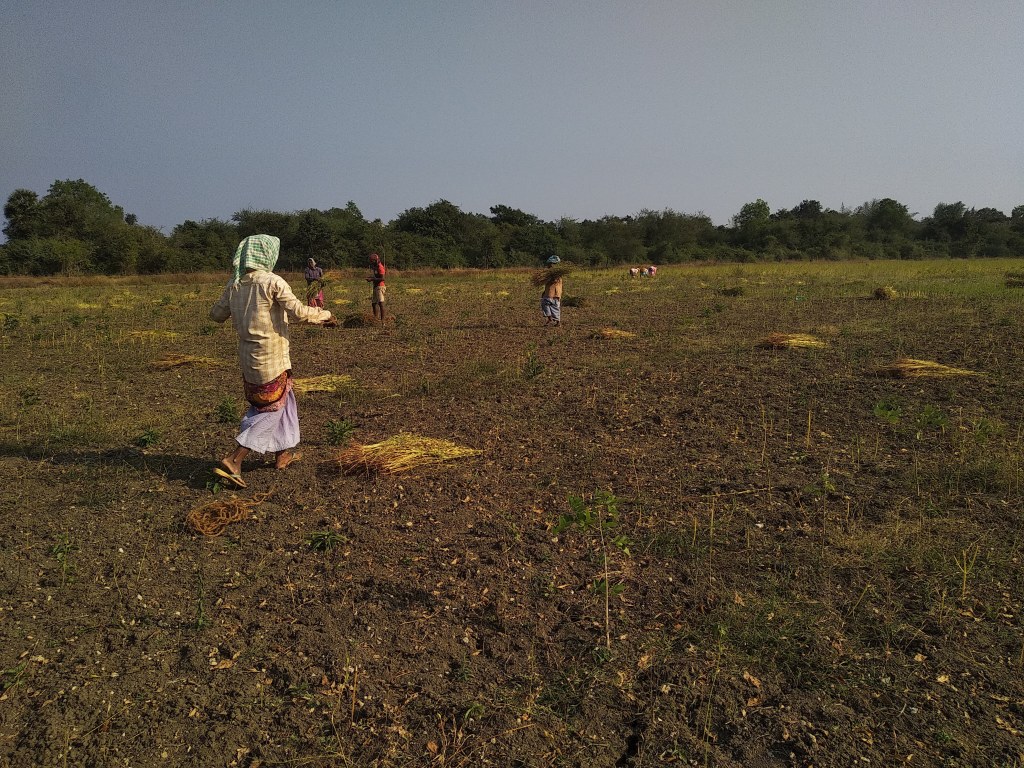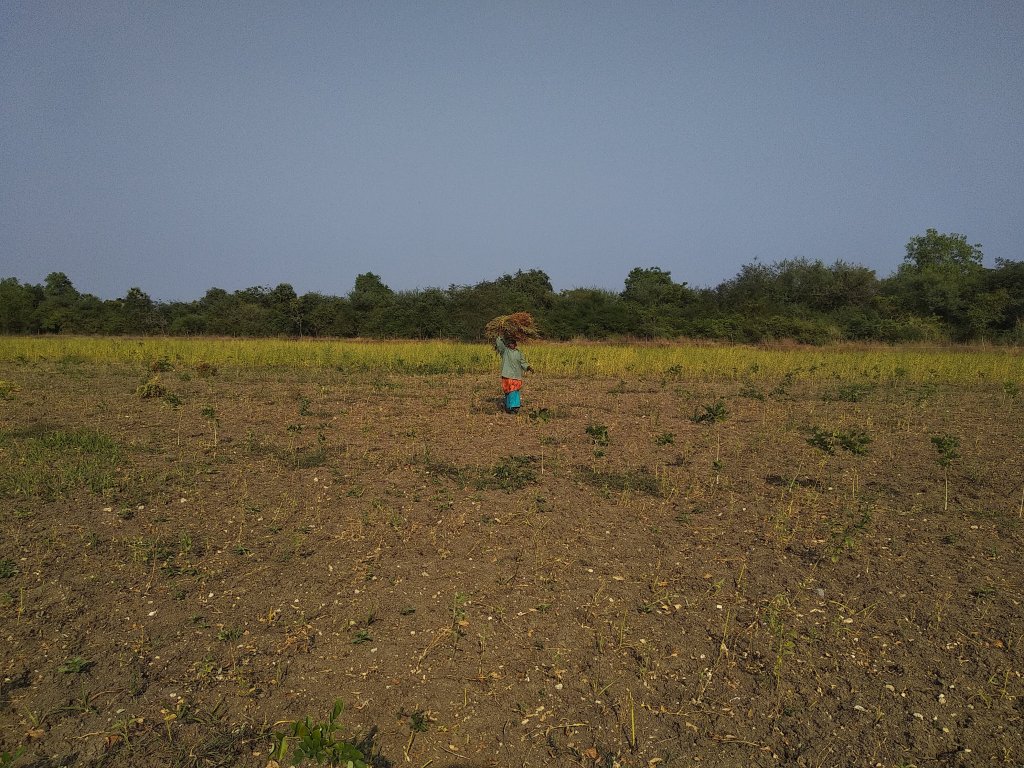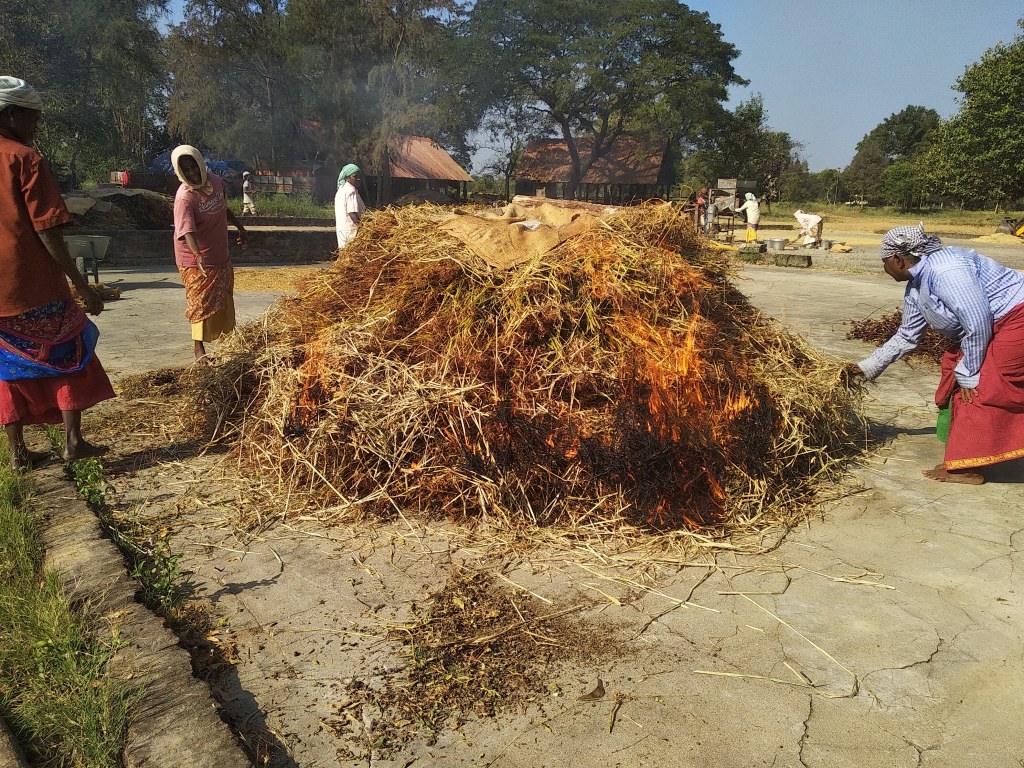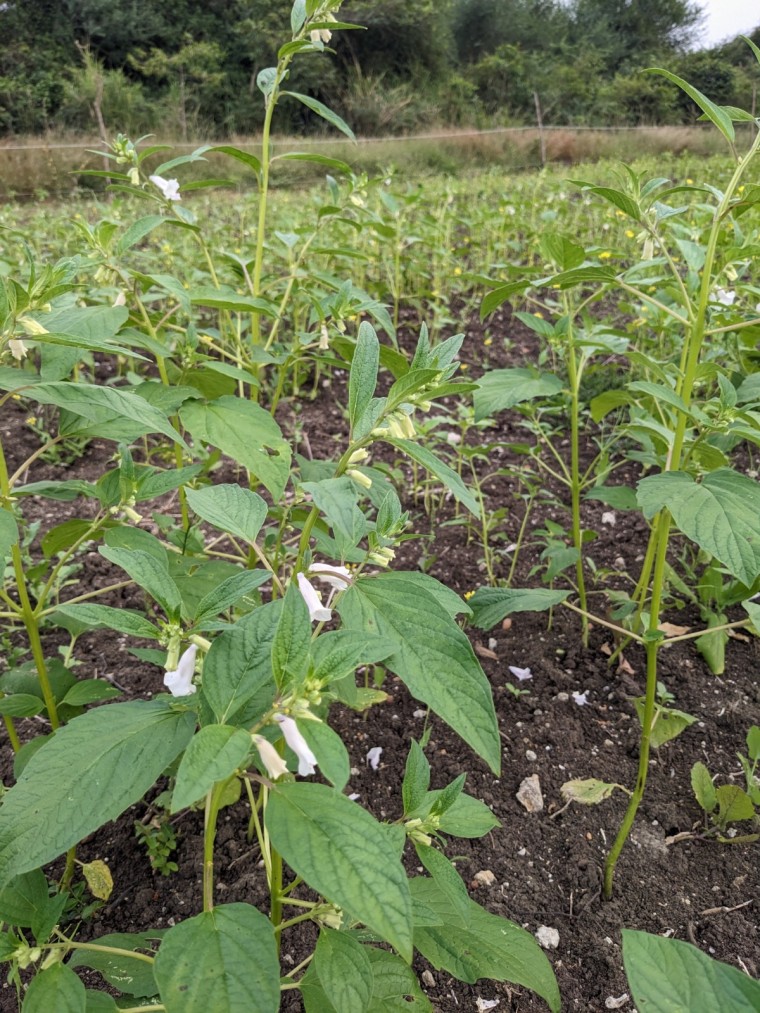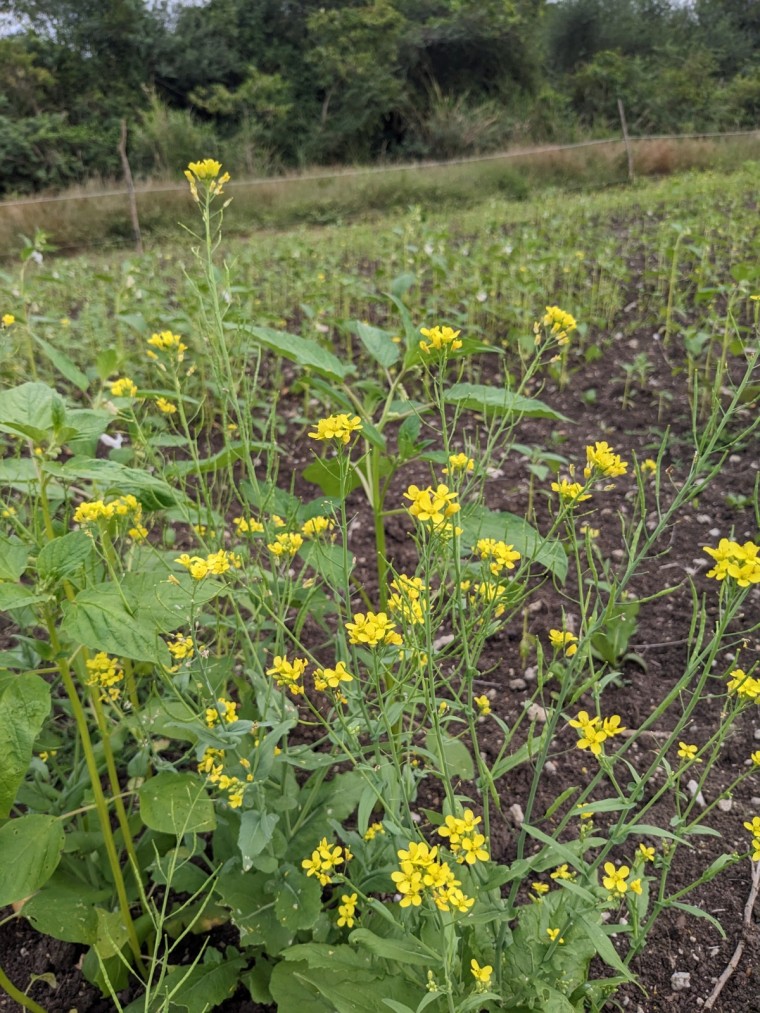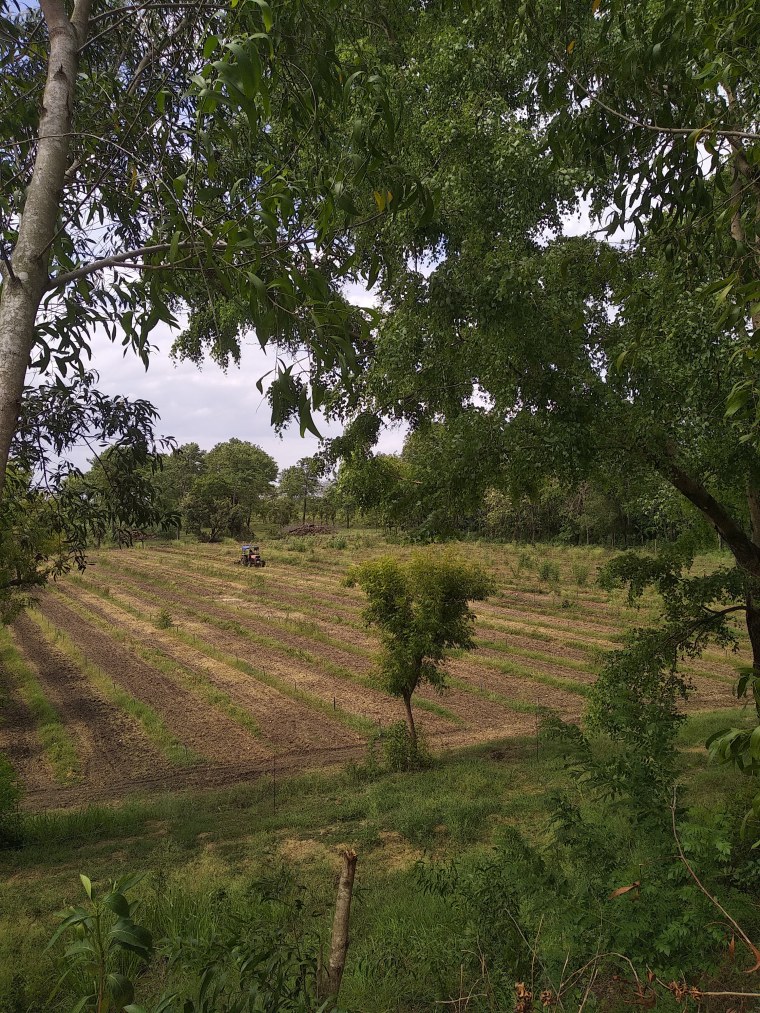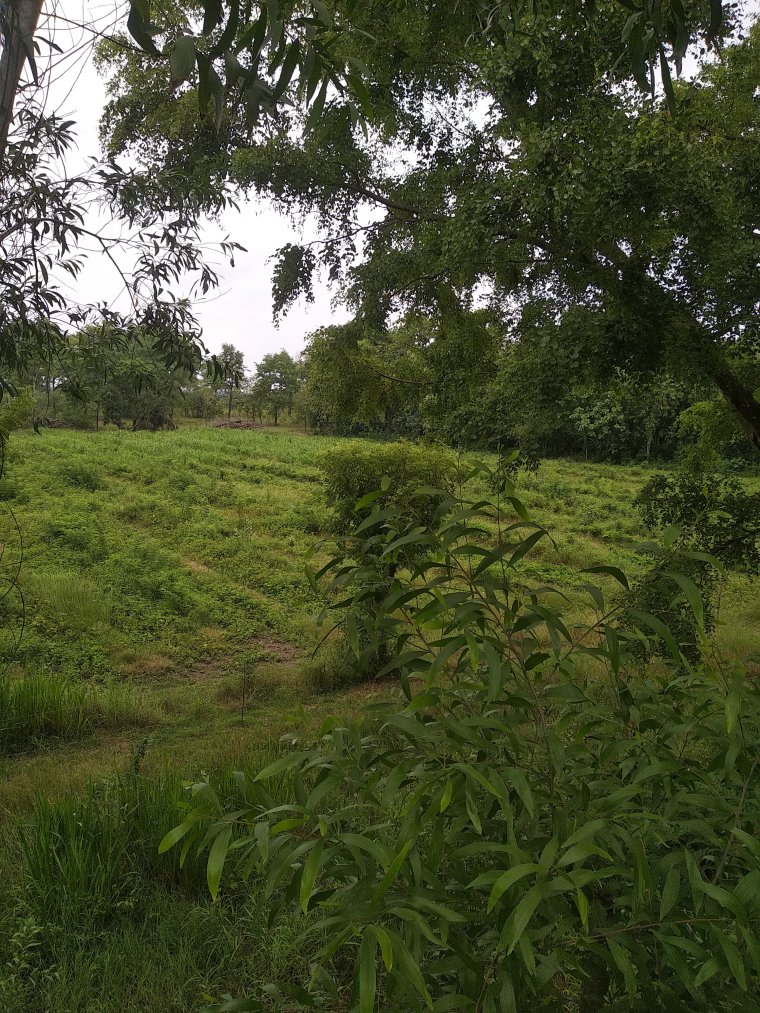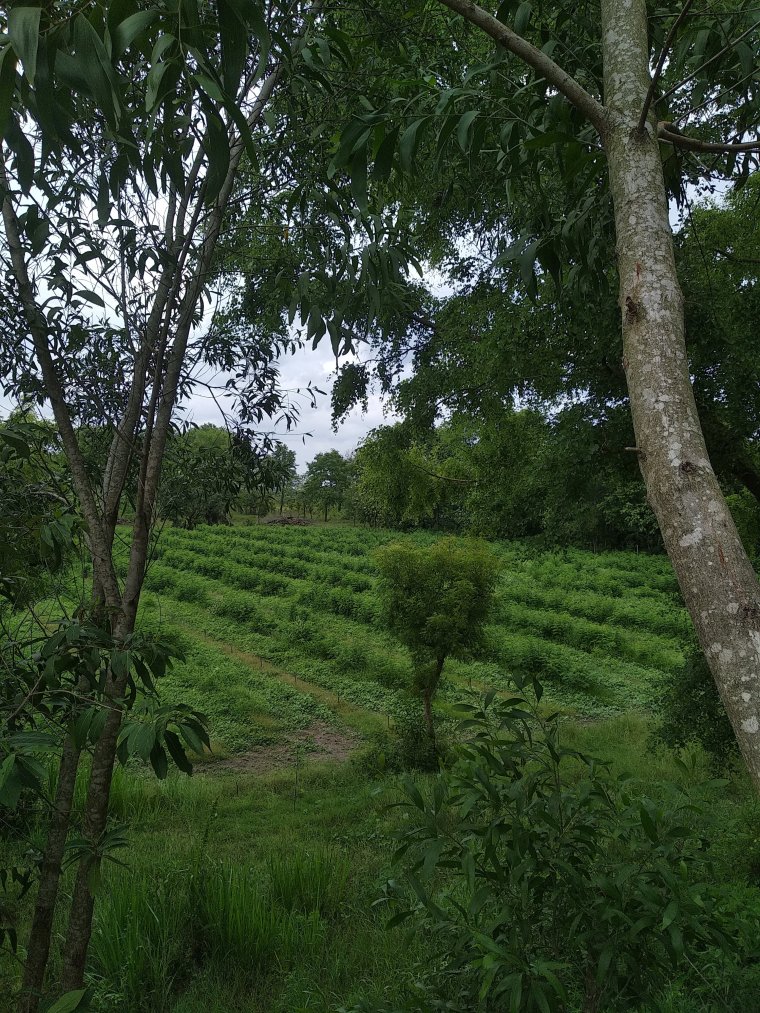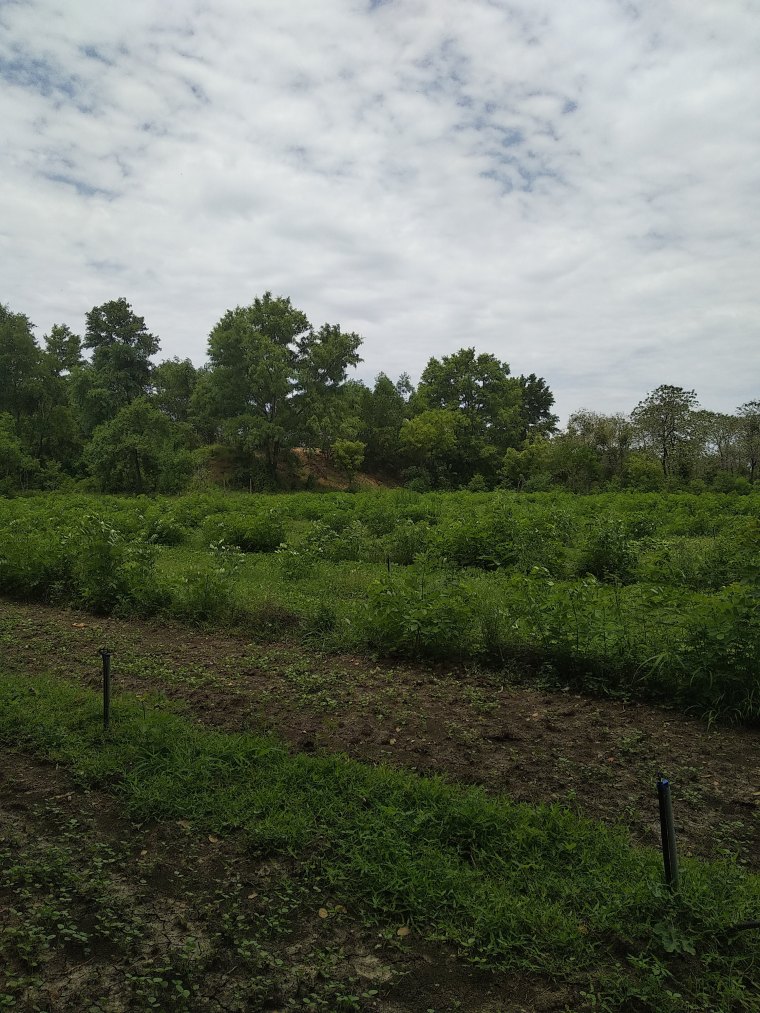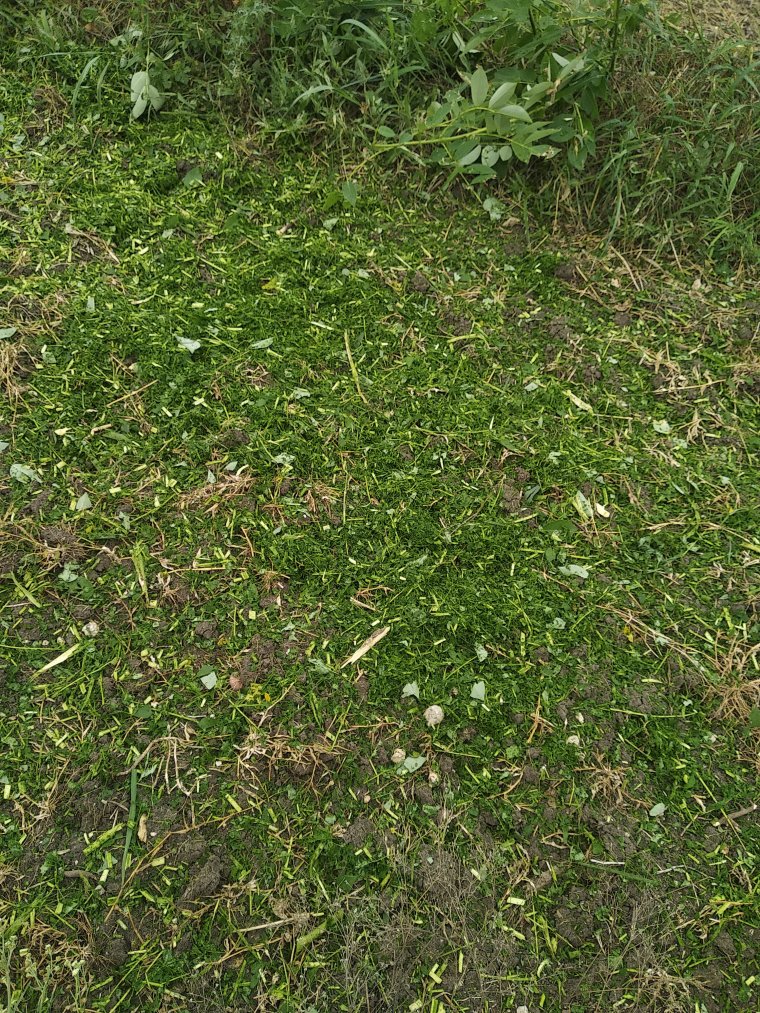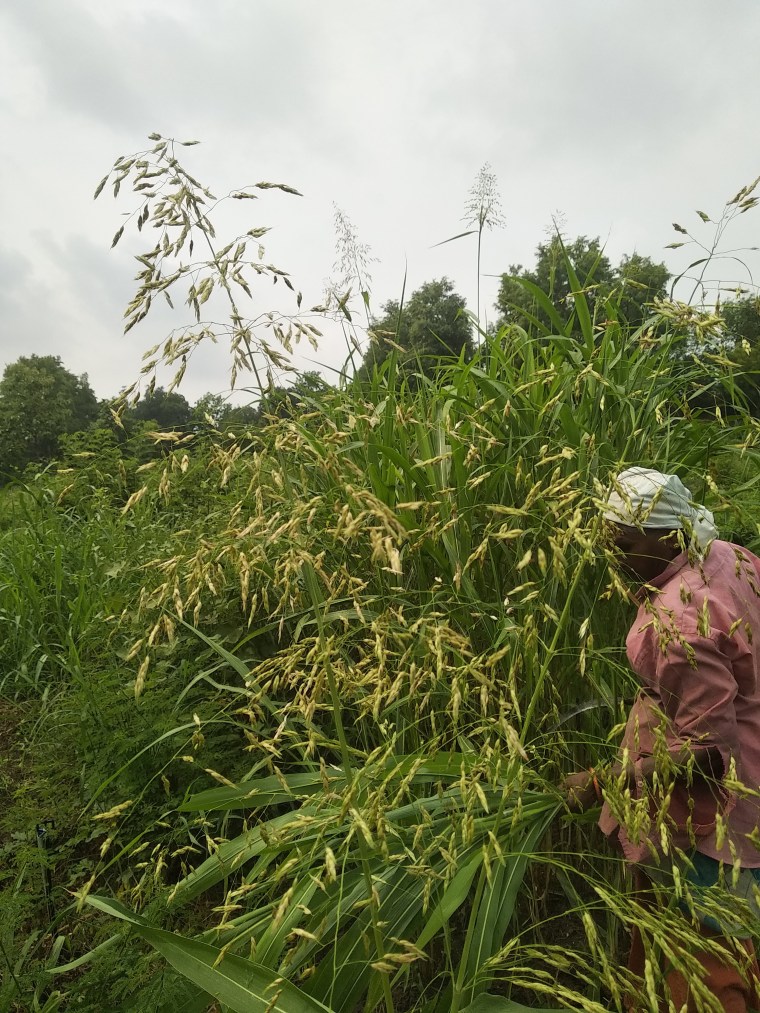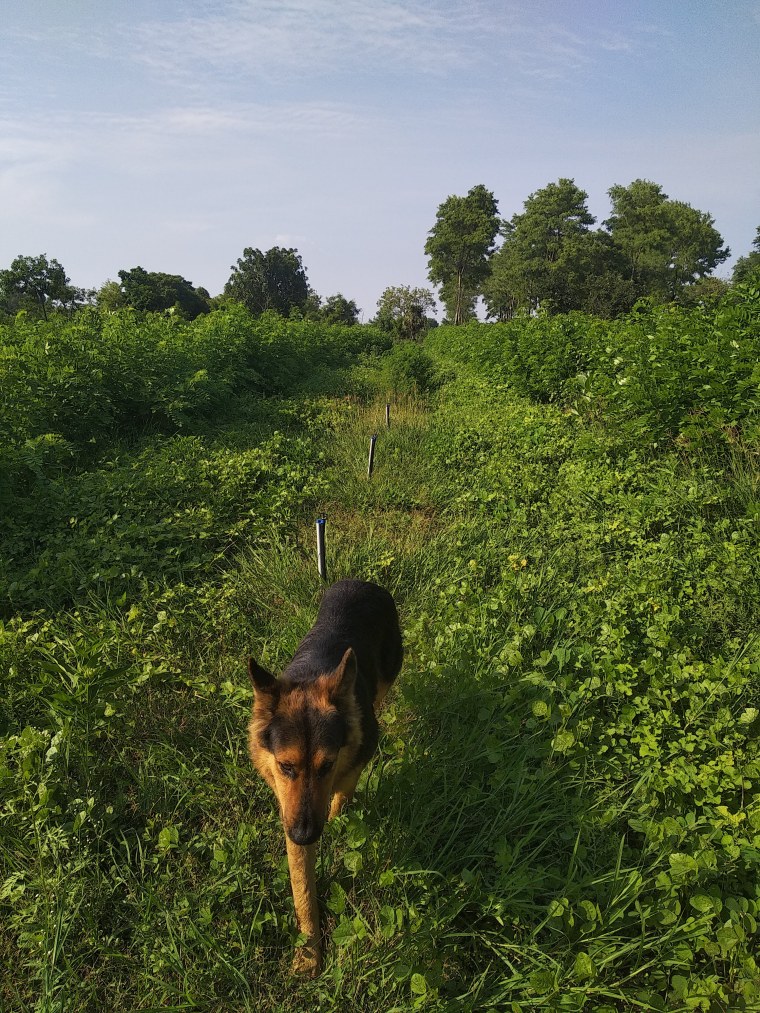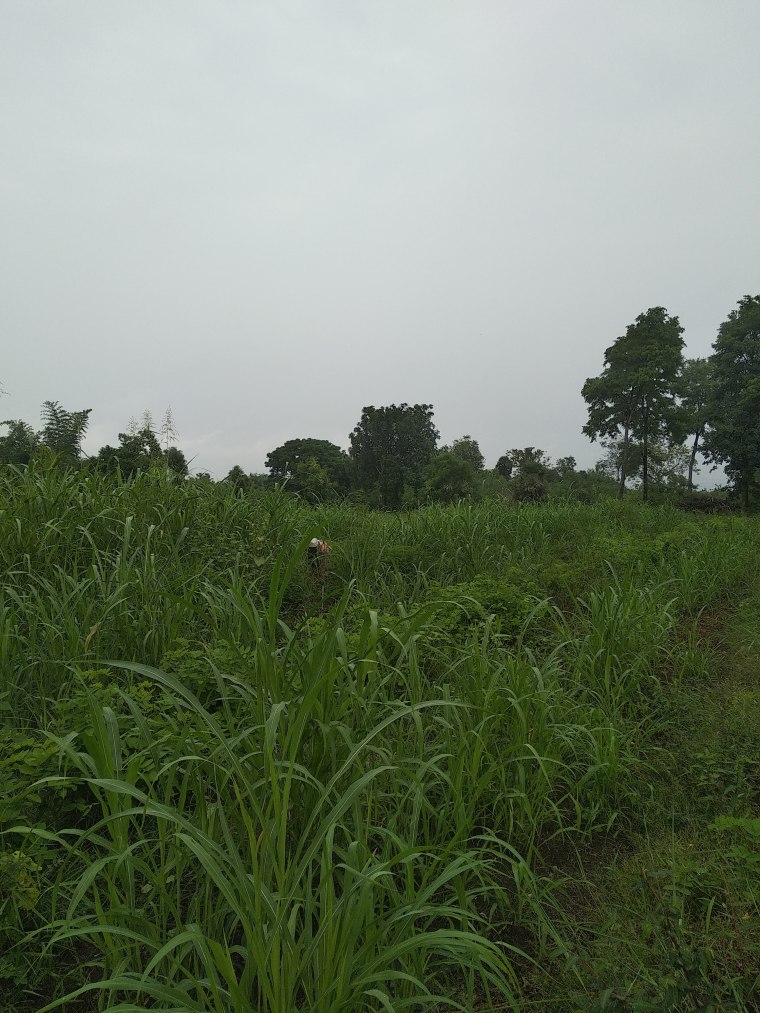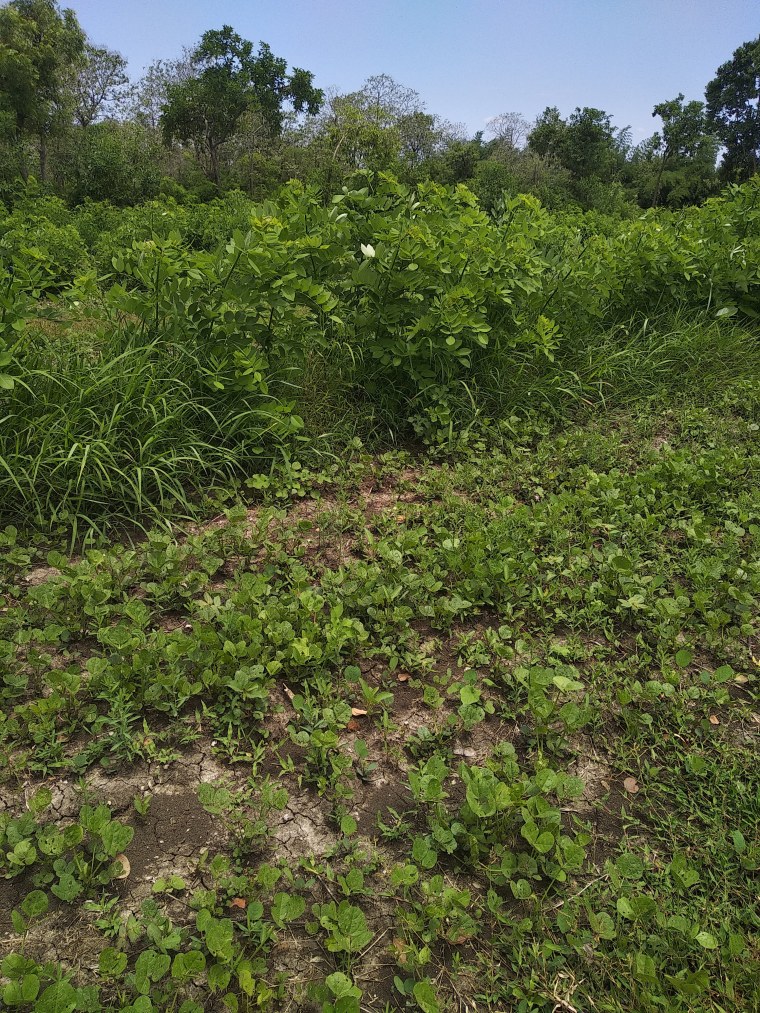We harvested the rain-fed sesame crop from the far-out plot [id: 373] this week. It took us 3 days to finish the harvest* from 4 acres, but we managed to harvest most of the crop in time without seed loss [shattering] due to over-ripening.
*Sesame is harvested when the leaves turn yellow and start drooping and the seed capsules are green/lemon yellow by pulling out the plants.
Once the bundles come to the drying floor, they are stacked and “smoked” as a traditional post-harvest pest control method and left to mature till the seed pod is ripened. After 8 days the plants are taken out of the pile and dried in the sun. During the drying process the seed capsules will open and the seeds fall out on the floor. Once all seeds are on the floor, the plant stalks are removed and the seeds are dried, cleaned and stored in plastic airtight containers and flushed with CO2 because sesame seed is easily infested by weevils and bugs during storage. Before processing or sale, seeds are washed and re-dried.
Looking back over this season of rain-fed sesame crop, there was just enough rain to get the seeds germinated and plants established in the early stage and a few light rains to develop the crop. Rain-fed post monsoon crops are quite risky and it is very important that we get the right amount of rain at the right time or one can easily loose the crop when rains fail or are too heavy.
As plot 373 was tilled for the first time for the cultivation since many years, we did not observe the overwhelming growth of weeds and avoided weeding altogether. We protected the field with a solar powered electric fence to keep out the pigs, deer and village cows/goats.
Sesame at Annapurna is processed into ‘Gomasio’ to make the cultivation economically viable. Gomasio is a dry condiment/seasoning made using toasted sesame seeds and Himalayan salt (Classic Blend) and another with addition of pepper to the original classic blend. This is a low-sodium, nutritious, umami-rich seasoning that you can complement with a variety of foods, especially salads or simply plain rice and ghee!



